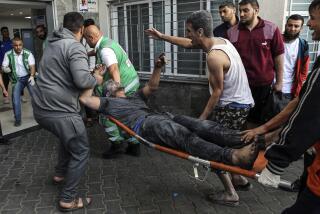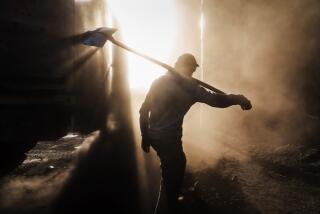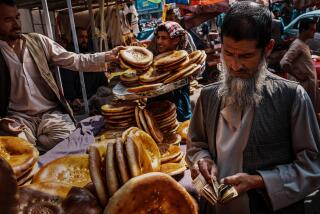Afghanistan’s Invincibility: Piercing the Myths
- Share via
In the silence before the battles are joined, there is a whisper that these soft soldiers of the world’s only superpower will be no match for the hardy Afghans in the rocky passes of their home ground, and especially not in winter. This historic graveyard of empires will be another quagmire that will suck the U.S. under, declares the Taliban mullah, Mohammed Omar.
It sounds a little like Iraqi leader Saddam Hussein’s threat of “the mother of all battles.” Yet his divisions folded in 100 hours. Ah, but the terrain is impossibly different and harsh, and doomsayers point to the evidence: Over 11 years, the indomitable Afghan warriors brought the mighty Soviet Union and its vassals to their knees.
This proposition is largely based on four Cold War myths.
* Myth 1: The moujahedeen beat the Soviet Union. When Gen. Boris V. Gromov retreated across a bridge over the Amu Darya River back into Central Asia in February 1989, he was returning to an outdated ideology that was collapsing from within. It was the Reagan administration’s economic pressure that forced the Soviet Union out of Afghanistan, not the moujahedeen. Their contribution, brave but disordered, was secretly financed and armed by a combination of the CIA, Saudi Arabia and Egypt, and they were trained and directed by Pakistan’s powerful Inter-Services Intelligence force. Besides, Gromov left behind the Communist-backed Najibullah regime that, against all odds, fought on successfully for another three years.
* Myth 2: The moujahedeen took Kabul from Najibullah. Militarily, they did not. Hopelessly divided along ethnic lines, they barely touched Kabul until Najibullah’s tough Uzbek militia under Gen. Abdul Rashid Dostum revolted over a pay and promotions dispute. In April 1992, the moujahedeen arrived in Kabul with hardly a shot fired except for endless volleys of “happy fire.” Then, seeking the spoils of victory, they turned on one another within a week. Dostum now is a leader of our allies, the Northern Alliance.
* Myth 3: The hardy moujahedeen held out in the mountains for 14 years. Not true. The leaders of seven of the eight main moujahedeen factions fought the war from Peshawar, Pakistan--most living in luxurious smugglers’ villas. Fighters were recruited from among 3 million refugees in the mud-brick camp cities there and around Quetta. Conducting raids into Afghanistan, many did stay for months at a time, but returned regularly for resupply and recuperation that would not be available now.
The exception to this was Ahmed Shah Masoud, the Tajik leader who held his native Panjshir Valley throughout the war. He was Afghanistan’s best hope, but Masoud was killed by two Arab suicide bombers posing as journalists two days before the World Trade Center-Pentagon attacks. According to my former Time magazine colleague, Anthony Davis, the last question they asked as they pointed a bomb-loaded TV camera at him was: “What are you going to do about Osama bin Laden?” They never waited for an answer.
* Myth 4: The Afghans have never been subdued. True, but they have never been united either. Among journalists who covered the war, attitudes toward them were a strange mixture of contempt and awe: admiration for their tribal tenacity and endurance; horror at their ruthless internal ethnic feuding, jealousies and disorder. In his 1992 book, “The Bear Trap,” Mohammad Yousaf, the Pakistani general who directed their strategy for four years, described the task of keeping a coherent force in the field as a nightmare.
Apart from the Soviets, the historical notion of empires humbled rests largely on the 1841 sacking of the British residency in Kabul and the systematic slaughter that followed of a retreating column of 12,000 civilians and 4,000 British-Indian troops. Even today, British bones turn up in minefields along the route. But surely modern transport, communications and air cover make this period irrelevant.
None of this supposes that the incursions ahead will be easy or bloodless. Meanwhile, after three years of drought, aid groups say millions of Afghans are starving and exhausted by 22 years of war. Hardly an invincible enemy.
More to Read
Sign up for Essential California
The most important California stories and recommendations in your inbox every morning.
You may occasionally receive promotional content from the Los Angeles Times.













